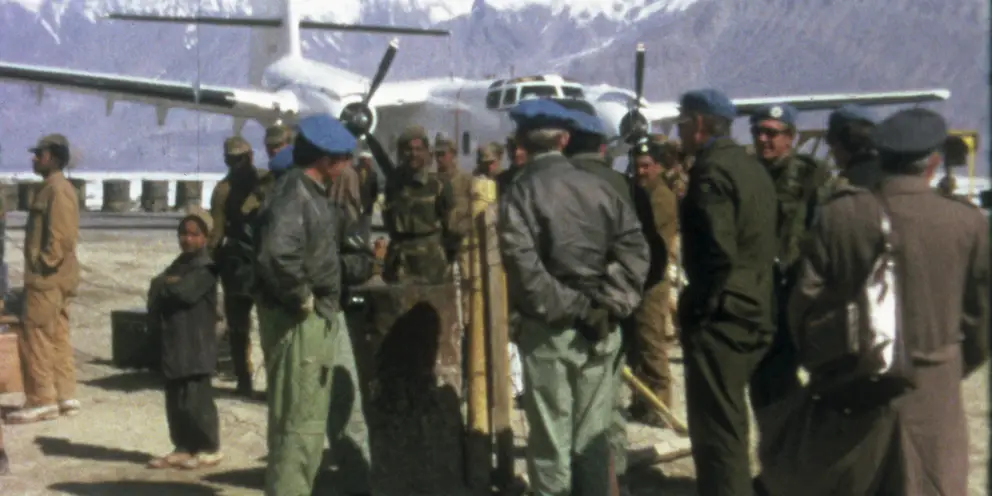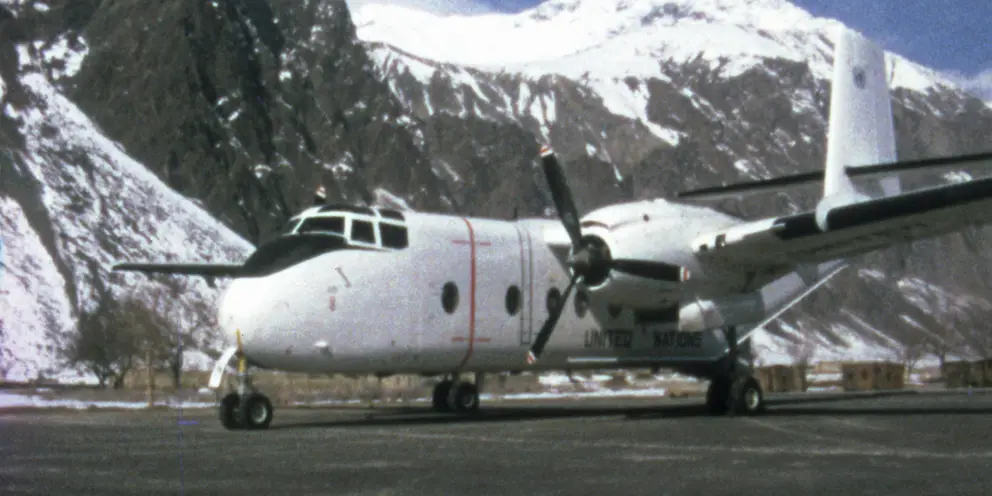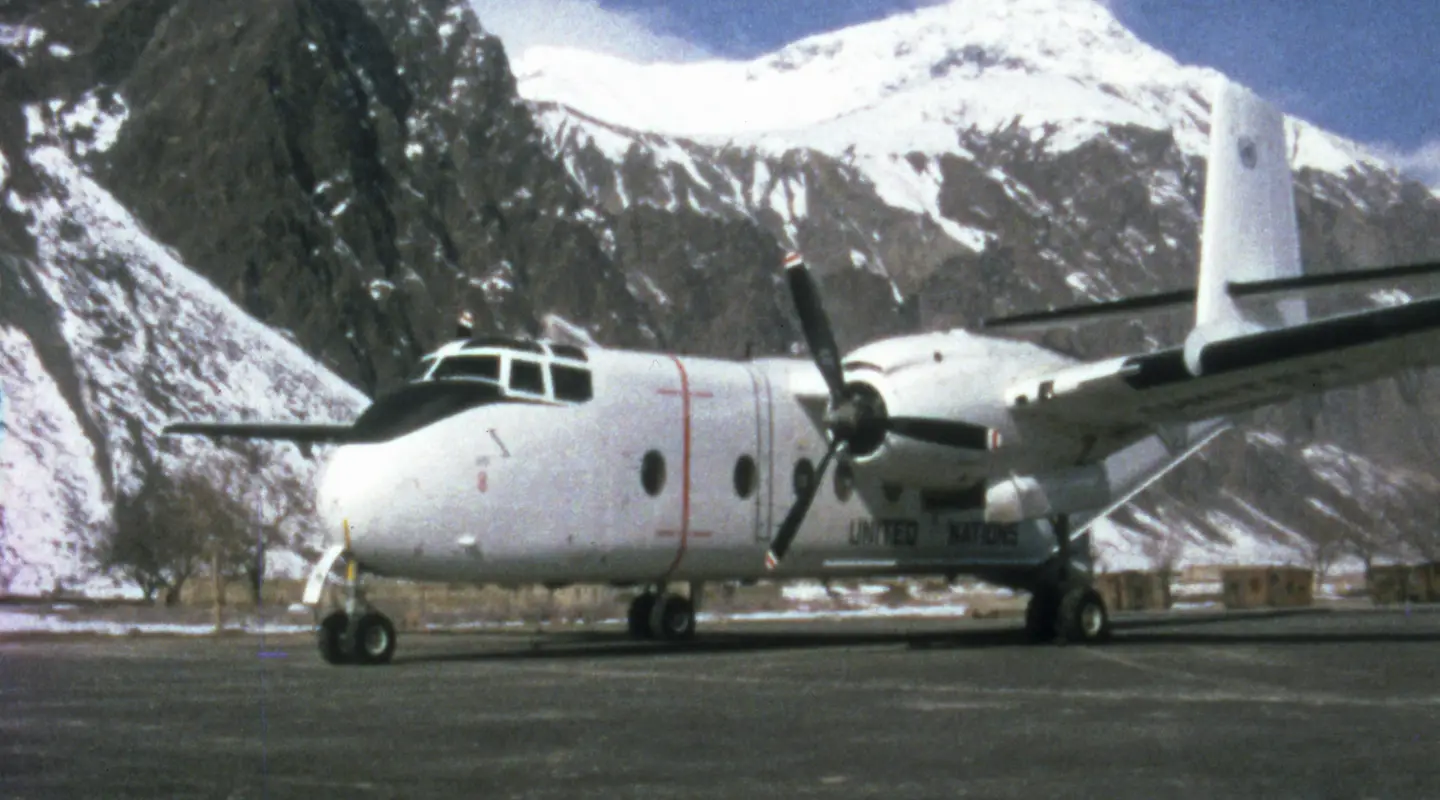Two reels of Super 8 video were filmed by Squadron Leader Baillie John McKenny while serving with the United Nations Military Observer Group in India and Pakistan (UNMOGIP) in 1975.
In 1993 two reels of colour super 8 film were donated to the Australian War Memorial. The film was made by Squadron Leader Baillie John McKenny while serving with the United Nations Military Observer Group in India and Pakistan (UNMOGIP) in 1975.
This film is the only currently held film footage of UNMOGIP, and reveals some of the context and history behind how 38 Squadron RAAF came to play a part in the long and fraught history of fighting between Pakistan and India along the Line of Control (LOC).
In 1947, after the dissolution of British rule in India, Pakistan and India formed two new nations. Disputes quickly arose over territorial claims to Kashmir and Jammu. The wars that followed produced the United Nations Commission for India and Pakistan (UNCIP), which assisted in negotiating a ceasefire. After UNCIP dissolved, the Security Council kept the UN military observers in place, officially forming UNMOGIP to oversee the ceasefire.
Over the next 35 years, Australia sent 280 Australian Defence Force personnel to India and Pakistan to monitor the Line of Control. They included 96 RAAF personnel between 1975 and 1979.
38 Squadron, RAAF, UNMOGIP 1975. Maker: Baillie John McKenny
The first crew from 38 Squadron, Detachment B based at Richmond, NSW, were commanded by Squadron Leader Baillie McKenny. In March 1975, McKenny and his team assessed whether a Caribou could land on the airstrips around the LOC that the Royal Canadian Airforce had been using. Before leaving Australia, the Caribous were painted white and marked with the official UN insignia. The Memorial holds four official Royal Australian Air Force photographs of the process. Three A4 De Havilland DHC-4 Caribous were flown by the RAAF during this time: A4-199, A4-152 and A4-264.

Members of the United Nations Military Observer Group in India and Pakistan (UNMOGIP) wait to board a Caribou aircraft flown by members of No. 38 Squadron, RAAF. Probably Srinagar, Kashmir. c. May 1975
The first part of McKenny’s film captures the tourist aspects of his time in India and Pakistan, and rural life around Rawalpindi and Srinagar. The second part shows the snow-capped mountain ranges through which 38 Squadron had to navigate. From the cockpit, McKenny films the mountains along the Line of Control, as his crew pick up and drop off observers and supplies for UNMOGIP personnel.

Front side view of a Caribou aircraft flown by members of No. 38 Squadron, RAAF, who formed part of the Australian contingent to the United Nations Military Observer Group in India and Pakistan (UNIMOGIP).
In a later interview he remarked that his crew and he would call this “the milk run … taking in or dropping off passengers and food.” For McKenny, “the view, the scenery, the landscape was just marvellous, magnificent. We were flying past Nanga Parbat every day! The 26,660-foot mountain.”
38 Squadron would fly six times a week, stopping at seven or eight field stations, and continued this work until the last Caribou and personnel flew back to Richmond in January 1979. McKenny’s footage reveals a small but integral part of Australia’s peacekeeping history that was certainly no milk run.

